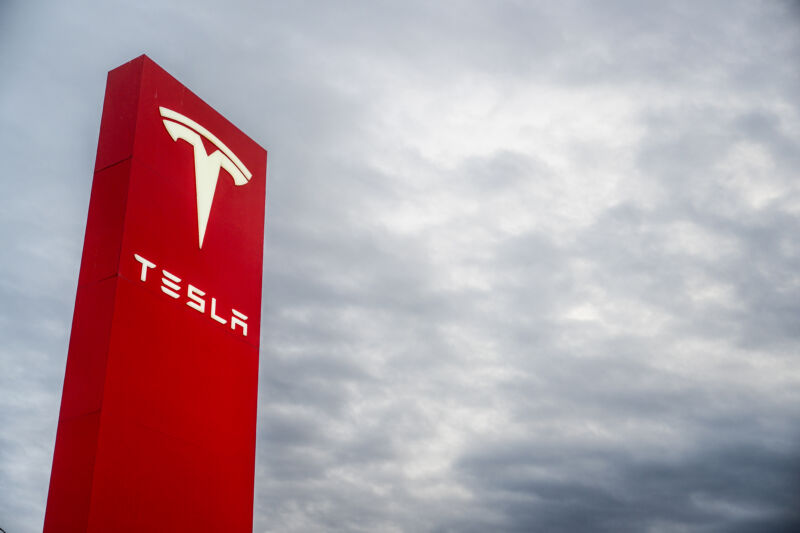Tesla has until July 1 to comply with the data request about its Autopilot recall.

The federal government has given Tesla quite the homework assignment. The electric automaker has until July 1 to reply to a massive data request from the National Highway Traffic Safety Administration, which is investigating the efficacy of Tesla’s massive Autopilot recall, following at least 20 crashes post-recall.
Tesla decided to recall more than 2 million cars in the US—almost every vehicle it has ever sold here—in December 2023, following an engineering analysis by NHTSA that found the automaker’s Autopilot driver assistance feature had inadequate driver monitoring and that Autopilot was too easily misused.
Last month, we discovered that NHTSA is not happy with the Autopilot recall. Now, the agency has made public the letter it sent Tesla this week, demanding a whole lot of answers by July 1.
What did Tesla fix?
Tesla made five specific fixes in the December recall. It added a “single-pull activation option” to engage Autopilot, which is meant to disable the adaptive cruise control and lane-keeping functions if the steering wheel is inadvertently moved enough to override the system. It also made the system use stricter driver monitoring standards “when approaching traffic controls off-highway” to try to prevent drivers from using Autopilot on surface streets.Advertisement
Tesla also increased driver monitoring for a short while after Autopilot is engaged. It introduced one-week suspensions from enabling the system “for drivers who receive three or five forced Autopilot disengagements (depending on cabin camera availability).” Finally, it enlarged the warning alerts shown to the driver on the infotainment system.
But NHTSA says it knows of at least 20 crashes involving Tesla Autopilot that fall into three different categories. It says there have been nine cases of a Tesla having a frontal collision with another vehicle, object, or person, for which there was time for an alert driver to have avoided the crash. Another six crashes occurred when Teslas operating under Autopilot lost control and spun out or understeered into something in a low-grip environment. And five more crashes occurred when the driver inadvertently canceled the steering component of Autopilot without disengaging the adaptive cruise control.
NHTSA also says it tested the post-recall system at its Vehicle Research and Test Center in Ohio and that it “was unable to identify a difference in the initiation of the driver warning cascade between pre-remedy and post-remedy (camera obscured) conditions,” referring to the supposedly stronger driver monitoring.
NHTSA also notes that the first of Tesla’s five fixes was not a default setting, and Tesla owners “must navigate to a menu and enable the feature,” which they can disable again if they want.
The agency also points out that Tesla has pushed out updates to its cars that are meant to reduce hydroplaning crashes and high-speed captive lane turn collisions that were separate from the recall fix.
ARS VIDEO
How The Callisto Protocol’s Gameplay Was Perfected Months Before Release
What is NHTSA asking for?
Consequently, Tesla has to send NHTSA a lot of data, including a database with information for every car it has sold or leased in the US, with information on the number and dates of all Autopilot driver warnings, disengagements, and suspensions for each of those vehicles. (There are currently more than 2 million Teslas on the road in the US.)
Tesla must also provide the cumulative mileage covered by Autopilot, both before and after the recall. NHTSA wants Tesla to explain why it filed an official Part 573 Safety Recall Notice, “including all supporting engineering and safety assessment evidence.” NHTSA also wants to know why any non-recall update was not part of the recall in the first place.
That’s not all. Tesla must tell NHTSA how many “hands on wheel” warnings its cars have displayed, both pre- and post-recall. Tesla also has to explain to NHTSA why it decided to implement each of the five fixes the way it did, in laborious depth for each remedy.
NHTSA also asks Tesla to explain how it uses human factors science in Autopilot. This includes identifying each job related to human factors since the inception of Autopilot and determining whether those jobs still exist and, if not, the date and reason that position no longer exists.
Tesla must tell NHTSA about the role the cabin camera plays in monitoring driver engagement. In our experience, other automakers that use a camera-based driver monitoring system use a dedicated infrared gaze-tracking camera pointed directly at the driver. Tesla, meanwhile, uses a camera mounted in the rear-view mirror with a much wider field of view.
NHTSA is also demanding detailed information about how Tesla learns about crashes involving its vehicles. The agency wants to know about changes Tesla has made to driver monitoring since July 1, 2023, and any crashes that have occurred since the recall last December. Finally, Tesla must give NHTSA copies of all internal and external communications about the Autopilot recall and any non-recall updates to Autopilot, including all the decision-making and testing that went into the recall and those updates.
If Tesla doesn’t answer NHTSA’s questions, the Vehicle Safety Act allows the regulator to fine the company up to $27,168 per violation per day, with a maximum penalty of $135,828,178, although the automaker is allowed to request an extension. Here’s hoping for Tesla’s sake that the employees needed to complete this massive data request haven’t been part of a month-long series of layoffs at the company.




